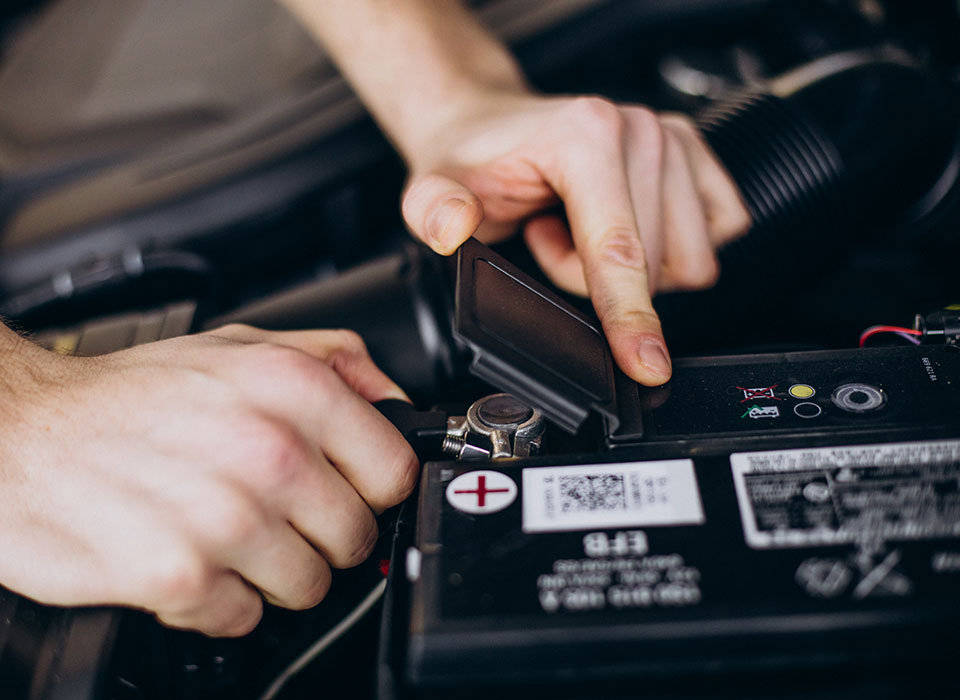The Ultimate Guide to Battery Maintenance: Tips for Longevity and Performance
In the realm of vehicle maintenance, one crucial aspect often overlooked is battery maintenance. Your vehicle’s battery is the heart of its electrical system, powering everything from the ignition to the lights and accessories. To ensure your battery lasts as long as possible and performs optimally, it’s essential to incorporate regular Battery Maintenance into your routine. In this comprehensive guide, we’ll delve into the essential tips for vehicle battery maintenance that will help extend its longevity and performance.
Basics for Battery Maintenance
Before diving into Battery Maintenance tips, it’s crucial to understand the basics of how a vehicle battery functions. Most vehicles use lead-acid batteries, which consist of lead plates immersed in sulfuric acid electrolyte. These batteries produce electricity through a chemical reaction between the lead plates and electrolyte, generating voltage to power the vehicle’s electrical components.
1. Keep It Clean
One of the simplest yet most effective ways to maintain your battery is by keeping it clean. Over time, dirt, grime, and corrosion can accumulate on the battery terminals, hindering proper electrical conductivity. Regularly inspect the battery terminals and cables for any signs of corrosion, and clean them using a mixture of baking soda and water. Ensure the terminals are tight and secure after cleaning to prevent electrical resistance.
2. Check Fluid Levels
For traditional lead-acid batteries, it’s essential to check the electrolyte fluid levels regularly. Most modern batteries are sealed, maintenance-free units, but if you have a traditional battery with removable caps, inspect the fluid levels and top them off with distilled water if necessary. Ensure the fluid levels are above the plates but below the bottom of the fill well.
3. Test Battery Voltage
Regularly testing your battery voltage is a crucial aspect of battery maintenance. A fully charged battery should have a voltage reading of around 12.6 volts. Use a multimeter to test the voltage across the battery terminals, and if the reading is significantly lower, it may indicate a weak or discharged battery that requires charging or replacement.
4. Perform Regular Charging
Proper charging is essential for maintaining battery health, especially if your vehicle sits idle for extended periods. Invest in a quality battery charger and perform regular charging to keep the battery topped up. Avoid overcharging the battery, as it can lead to electrolyte loss and internal damage.
5. Protect from Extreme Temperatures
Extreme temperatures can have a significant impact on battery performance and longevity. During hot weather, ensure proper ventilation to prevent overheating, and during cold weather, consider using a battery insulation kit or parking in a garage to protect the battery from freezing temperatures. Extreme heat and cold can accelerate battery degradation, so taking precautions is crucial.
6. Drive Regularly
Believe it or not, regular driving can actually benefit your vehicle’s battery. Short trips and infrequent driving can lead to undercharging, which can cause sulfation and reduce battery life. Aim to drive your vehicle regularly, especially if it’s equipped with electronic accessories that draw power even when the engine is off.
7. Invest in Quality
When it comes time to replace your vehicle’s battery, invest in a high-quality unit from a reputable manufacturer. While budget batteries may seem like a cost-saving option initially, they often lack the longevity and performance of premium batteries. Opting for a quality battery can save you money in the long run by reducing the frequency of replacements and ensuring reliable performance.
8. Avoid Excessive Electrical Load
Minimize the electrical load on your vehicle’s battery by turning off unnecessary accessories when the engine is not running. This includes lights, radio, air conditioning, and other electronic devices. Excessive electrical load can drain the battery faster, especially in older vehicles or those with aftermarket accessories.
9. Secure the Battery
Ensure the battery is securely fastened in its mounting bracket to prevent vibration and movement while driving. Loose batteries can suffer internal damage and premature failure due to excessive shaking and vibration. Check the battery’s hold-down clamp or bracket regularly and tighten if necessary to keep the battery firmly in place.
10. Monitor for Signs of Wear
Regularly inspect your vehicle’s battery for any signs of wear or damage, such as bulging or leaking. These symptoms may indicate internal damage or a defective battery that needs replacement. Additionally, pay attention to any unusual behavior, such as slow cranking or dimming lights, which could indicate a weak or failing battery that requires attention.
Battery Maintenance Conclusion:
In conclusion, proper vehicle battery maintenance is essential for extending the life and performance of your vehicle’s battery. By incorporating these tips into your maintenance routine, you can ensure your battery remains healthy and reliable for years to come. Remember to regularly inspect, clean, and test your battery, and invest in quality when it’s time for a replacement. With proper care, your vehicle’s battery will continue to power your journeys with efficiency and reliability.




